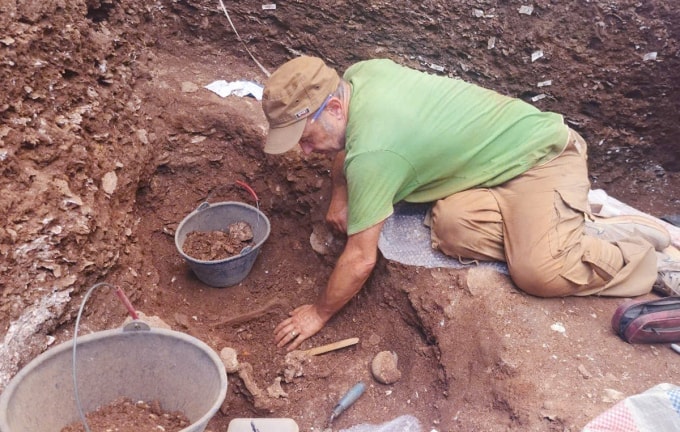
On April 22, the Department of Culture, Sports and Tourism of Nghe An province announced the excavation results at the archaeological site in Hamlet 6, Quynh Van Commune, Quynh Luu District.
The excavation was carried out in mid-March by specialized units of the department in coordination with the University of Social Sciences and Humanities (Vietnam National University, Hanoi) and international experts from the Australian National University.
Excavating two pits of 18 square meters, archaeologists discovered nine sets of remains lying at a depth of three meters. The remains were about 50 centimeters apart and were buried in a double burial position. Three of the remains were stacked on top of each other and separated by a thin layer of soil, surrounded by layers of mollusk shells.
In addition, archaeologists also discovered many jewelry made of seashells and snails; stone and bone artifacts such as axes, flakes, pestles, stoves...
Nghe An Provincial Museum assessed that the nine newly discovered remains belonged to residents of the Quynh Van culture, which lived about 4,000 - 6,000 years ago. The remains and artifacts were sent for radiocarbon testing to determine the exact age as well as conduct in-depth research on the Quynh Van culture. After the results are available, the team of experts will propose a larger-scale archaeological campaign in the near future.
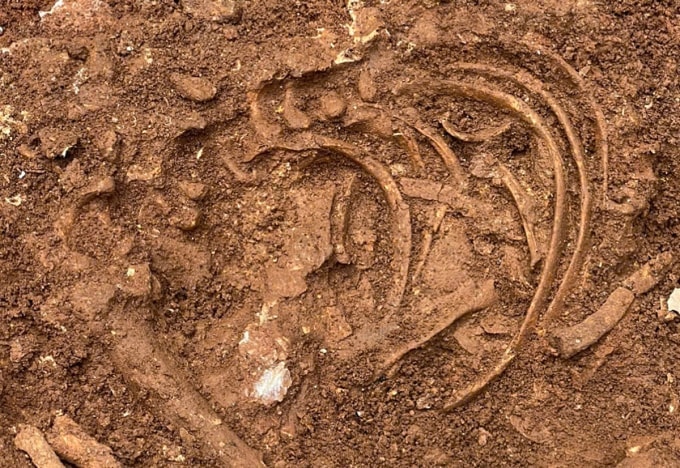
Quynh Van culture belongs to the late Neolithic period, distributed in the coastal plains of Nghe An and Ha Tinh provinces. The relics are usually scallop mounds 5 - 6 m thick, 1 - 10 km from the sea, located on a narrow plain, sandwiched between low hills and the East Sea.
This culture was first discovered by French scholars in 1930 in the Cau Giat area of Quynh Luu district. Through many surveys and excavations in 1963, 1976 and 1979, authorities identified 21 related sites, most of which were concentrated in Quynh Luu district. The traces of habitation include kitchens, burials, stone tools, bone objects, pottery fragments and many mollusk shells, showing the prehistoric people's lifestyle associated with the sea and hunting and gathering activities.
TH (according to VnExpress)Source: https://baohaiduong.vn/phat-hien-9-di-cot-nguoi-tien-su-o-nghe-an-410017.html



![[Photo] General Secretary To Lam arrives in Minsk, begins state visit to Belarus](https://vphoto.vietnam.vn/thumb/1200x675/vietnam/resource/IMAGE/2025/5/11/76602f587468437f8b5b7104495f444d)

![[Photo] General Secretary To Lam concludes visit to Russia, departs for Belarus](https://vphoto.vietnam.vn/thumb/1200x675/vietnam/resource/IMAGE/2025/5/11/0acf1081a95e4b1d9886c67fdafd95ed)

![[Photo] General Secretary To Lam meets and expresses gratitude to Vietnam's Belarusian friends](https://vphoto.vietnam.vn/thumb/1200x675/vietnam/resource/IMAGE/2025/5/11/c515ee2054c54a87aa8a7cb520f2fa6e)



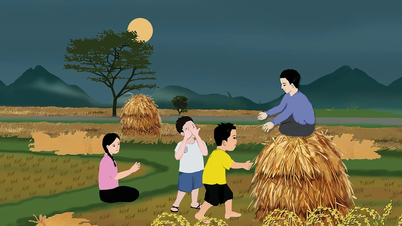






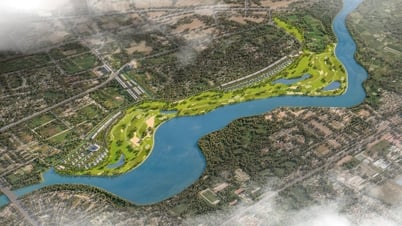


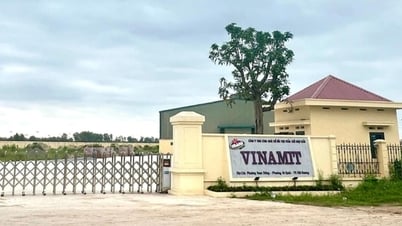


![[Photo] National Assembly Chairman Tran Thanh Man attends the Party Congress of the Committee for Culture and Social Affairs](https://vphoto.vietnam.vn/thumb/1200x675/vietnam/resource/IMAGE/2025/5/11/f5ed02beb9404bca998a08b34ef255a6)















































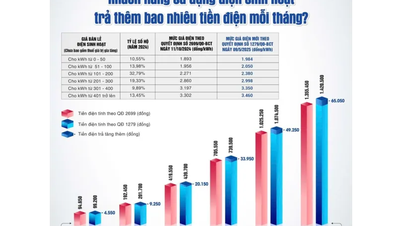
















Comment (0)